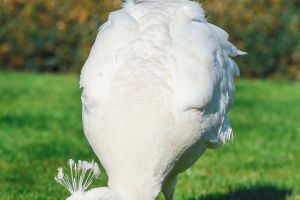Dragonflies, with their mesmerizing aerial acrobatics and vibrant colors, have captivated the imagination of both nature enthusiasts and scientists for centuries.
These ancient insects, belonging to the order Odonata, are characterized by their unique wing structure, multifaceted eyes, and remarkable hunting abilities.
In this article, we will explore the fascinating realm of dragonflies, delving into their evolutionary adaptations, awe-inspiring hunting techniques, and the importance of conserving these captivating insects for the preservation of our ecosystems.
1. Evolution and Diversity
Dragonflies are part of an ancient lineage that dates back approximately 325 million years. They are believed to have evolved during the late Paleozoic era, even before dinosaurs roamed the Earth.
With over 5,000 known species worldwide, dragonflies exhibit remarkable diversity in size, shape, and coloration. From the tiny pygmy sunbeam to the impressive giant darner, these insects come in various forms, each adapted to its unique habitat and lifestyle.
2. Anatomy and Flight
Dragonflies possess a distinct body structure that sets them apart from other insects. Their large, compound eyes provide a nearly panoramic field of vision, enabling them to detect prey and predators with precision.
Additionally, they have two pairs of transparent wings that beat independently, allowing them to hover, fly backward, and change direction swiftly. Their powerful flight muscles enable quick takeoffs and agile maneuvers, making them some of the most skilled aerial hunters in the insect world.
3. Life Cycle and Reproduction
Dragonflies undergo a fascinating metamorphosis from egg to adult. After mating, females lay their eggs in or near water bodies, such as ponds or streams. These eggs hatch into aquatic nymphs, also known as naiads, which spend several months or even years living underwater. Naiads possess unique adaptations, including gills for breathing underwater and extendable jaws for capturing prey.
Eventually, they emerge from the water, shedding their exoskeleton to reveal the adult form. Adult dragonflies then engage in courtship displays, and once successful, the female lays eggs, continuing the life cycle.
4. Predatory Behavior
Dragonflies are voracious predators, feeding primarily on other insects. They have an incredible hunting prowess, aided by their keen vision and exceptional flight capabilities.
By using their long, spiky legs, they snatch prey out of the air or pluck it from leaves and branches. Dragonflies are particularly beneficial in controlling mosquito populations, as they consume large quantities of these bothersome pests. Their efficiency as natural pest controllers makes them valuable allies in maintaining ecological balance.
5. Ecological Significance
Dragonflies play a vital role in various ecosystems. As predators, they help regulate populations of insects, including mosquitoes, flies, and gnats, which can be agricultural pests or disease vectors.
Their presence indicates a healthy and balanced ecosystem, as they are sensitive to changes in water quality and habitat degradation. Dragonflies are also indicators of biodiversity, and their abundance and diversity can provide valuable insights into the health of wetlands and freshwater systems.
Dragonflies are marvels of nature, embodying both grace and power in their slender bodies. Their evolutionary success, remarkable hunting abilities, and ecological significance make them a subject of fascination and admiration. Understanding and protecting these enchanting insects can contribute to the preservation of our natural world.


